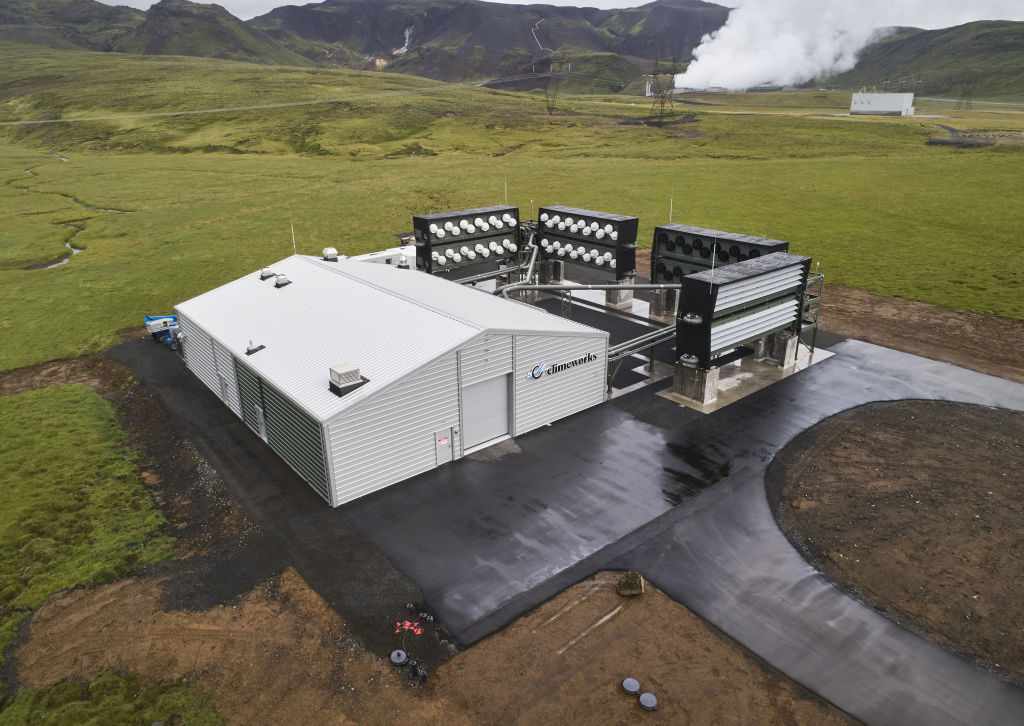
Swiss startup Climeworks AG has raised 600 million francs ($650 million) to scale up its technology that sucks carbon dioxide directly from the air.
The world has to reach peak greenhouse-gas emissions before 2025 to avoid catastrophic climate change, according to a major United Nations report published Monday. But most scenarios that keep warming within 1.5°C above pre-industrial levels will also require removing some of the CO₂ that’s already been dumped into the atmosphere.
Climeworks is among a handful of startups offering the technology to do that. It currently operates the world’s largest direct-air capture plant in Iceland, where trapped CO₂ is injected deep underground and stored permanently.
So far the plant can capture only about 4,000 tons each year, roughly equivalent to the annual emissions of 600 people living in Europe. The startup needs to grow quickly if it is to contribute meaningfully to the billions of tons of negative emissions that will be needed by 2050 to meet global climate goals.
The $650 million Climeworks secured is the largest sum ever raised by a carbon-dioxide removal company. Its long list of investors includes private equity group Partners Group AG, along with managers of long-term capital such as Baillie Gifford and Swiss Re AG.
Climeworks will use the funds to build a 40,000-ton capture plant in the next three years, according to Chief Executive Officer Christoph Gebald. The goal is to capture more than a million tons of CO₂ a year by 2030. “Iceland is a top favorite because of its excellent geology,” he said, when asked about possible locations for the next plant. But Norway, Oman or even somewhere in North America are also options.
The company will also need to pick a place that has access to cheap green energy. “Climeworks is committed to using only renewable or sustainable energy sources,” said Gebald.
Climeworks’ technology works by moving large quantities of air over a special chemical that is able to filter out CO₂, similar to a magnet attracting iron fillings. The new compound is then heated to high temperatures to release a pure stream of CO₂ which can be injected underground. The entire process is quite energy intensive and only makes sense for the planet if the main source of energy is carbon-free.
While scientists have said that technologies to remove CO₂ from the air need to grow, experts also stress that they’re not a substitute for reducing emissions. The world has left the task of cutting emissions to so late that both options have to be ramped up.
Climeworks’ direct competitor is Canadian startup Carbon Engineering Ltd., which has partnered with Occidental Petroleum Corp. to try and build a million-ton capture plant. That will require raising hundreds of millions of dollars upfront for construction and then tens of millions of dollars each year to operate. It recently leased land in Louisiana where favorable geology would allow it to bury CO₂.
U.S.-based Global Thermostat, another direct-air capture startup that was founded at about the same time as Climeworks and Carbon Engineering about a decade ago, has struggled. It recently announced leadership changes that pushed out co-founder Graciela Chichilnisky from the role of chief executive officer in a bid to overcome management issues.
Climeworks meanwhile continues to grow. Gebald said he expects to reach 400 employees by the end of next year, from 180 full-time staff today.
More Must-Reads from TIME
- Donald Trump Is TIME's 2024 Person of the Year
- Why We Chose Trump as Person of the Year
- Is Intermittent Fasting Good or Bad for You?
- The 100 Must-Read Books of 2024
- The 20 Best Christmas TV Episodes
- Column: If Optimism Feels Ridiculous Now, Try Hope
- The Future of Climate Action Is Trade Policy
- Merle Bombardieri Is Helping People Make the Baby Decision
Contact us at letters@time.com